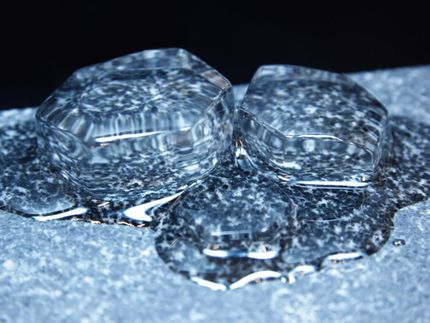Magnetic order in a two-dimensional molecular chessboard
Achieving magnetic order in low-dimensional systems consisting of only one or two dimensions has been a research goal for some time. In a new study Uppsala researchers show that magnetic order can be created in a two-dimensional chessboard lattice consisting of organometallic molecules that are only one atomic layer thick.
Magnetic order is a common phenomenon in three-dimensional materials, such as ferromagnetic order in iron bar magnets, where the magnetic moments on all iron atoms point in the same direction. In one or two dimensions, long-range magnetic order at temperatures higher than zero is not possible, however, according to the Mermin-Wagner theorem. A possibility to achieve a magnetic phase without such long-range order was suggested by Kosterlitz and Thouless (Nobel Prize 2016), who predicted that a topological magnetic vortex in which the magnetic moments point in different directions and compensate each other could be realizable in a two-dimensional film.
Researchers Ehesan Ali and Peter Oppeneer from Uppsala University have now shown in an international collaboration with researchers from Switzerland and India that long-range magnetic order can be created in specially designed molecular systems consisting of iron and manganese phthalocyanine molecules. These molecules, which have great similarities to the iron porphyrins that are found in natural blood, were adsorbed on a gold metal surface. The molecules do not react with gold atoms, but instead order themselves in a two-dimensional chessboard pattern consisting of alternating iron and manganese-based molecules. In this two-dimensional molecule lattice, the researchers could demonstrate magnetic order at low temperatures of just a few degrees Kelvin.
Through large-scale computer simulations, the Uppsala researchers were able to demonstrate a weak interaction between magnetic moments on the neighbouring molecule, which were transmitted through the gold electrons, the so-called Ruderman-Kittel-Kasuya-Yosida (RKKY) interaction. Although the metal phthalocyanine molecules do not react chemically with the noble metal gold, the gold's electrons sense the spin magnetic moments on the molecule and transmit this information to the neighbouring molecule.
The researchers also detected that another fundamental physical interaction, the Kondo screening, counteracted the magnetic order. This occurred because the gold electrons changed their spin magnetic moments to neutralize the molecule's moment, something they didn't quite succeed in, and therefore long-range magnetic order was formed.
"It was amazing that our careful calculations could establish how magnetic order is formed in the molecular layer," says Peter Oppeneer, Professor at the Department of Physics and Astronomy at Uppsala University. "Our discovery can pave the way for studying thus far unknown quantum magnetic states, and contributes to the realization of molecular quantum spintronics."
Original publication
Jan Girovsky, Jan Nowakowski, Md. Ehesan Ali, Milos Baljozovic, Harald R. Rossmann, Thomas Nijs, Elise A. Aeby, Sylwia Nowakowska, Dorota Siewert, Gitika Srivastava, Christian Wäckerlin, Jan Dreiser, Silvio Decurtins, Shi-Xia Liu, Peter M. Oppeneer, Thomas A. Jung & Nirmalya Ballav; "Long-range ferrimagnetic order in a two-dimensional supramolecular Kondo lattice"; Nature Comm.; 2017
Original publication
Jan Girovsky, Jan Nowakowski, Md. Ehesan Ali, Milos Baljozovic, Harald R. Rossmann, Thomas Nijs, Elise A. Aeby, Sylwia Nowakowska, Dorota Siewert, Gitika Srivastava, Christian Wäckerlin, Jan Dreiser, Silvio Decurtins, Shi-Xia Liu, Peter M. Oppeneer, Thomas A. Jung & Nirmalya Ballav; "Long-range ferrimagnetic order in a two-dimensional supramolecular Kondo lattice"; Nature Comm.; 2017
Topics
Organizations
Other news from the department science

Get the chemical industry in your inbox
By submitting this form you agree that LUMITOS AG will send you the newsletter(s) selected above by email. Your data will not be passed on to third parties. Your data will be stored and processed in accordance with our data protection regulations. LUMITOS may contact you by email for the purpose of advertising or market and opinion surveys. You can revoke your consent at any time without giving reasons to LUMITOS AG, Ernst-Augustin-Str. 2, 12489 Berlin, Germany or by e-mail at revoke@lumitos.com with effect for the future. In addition, each email contains a link to unsubscribe from the corresponding newsletter.
Most read news
More news from our other portals
Last viewed contents

How methane and CO2 can be used to combat plastic pollution
Martian_canal
Category:Alkaloids


























































